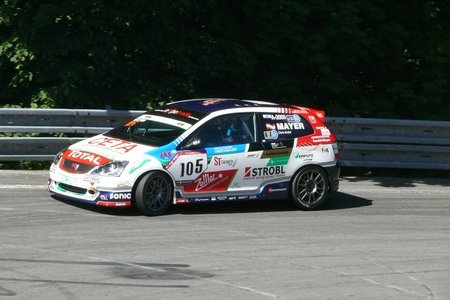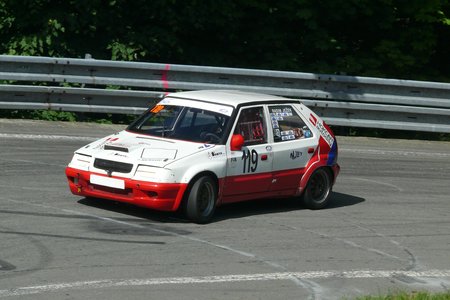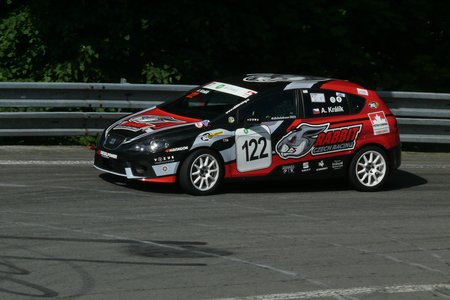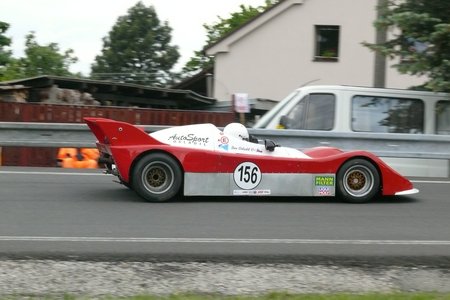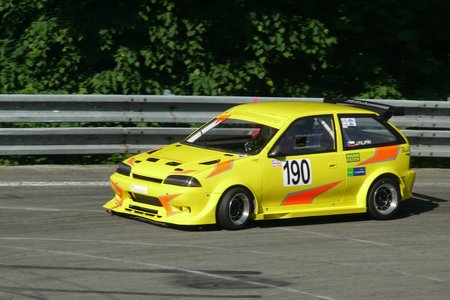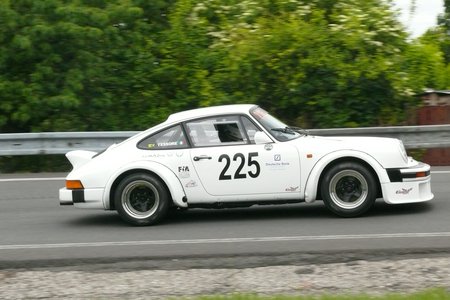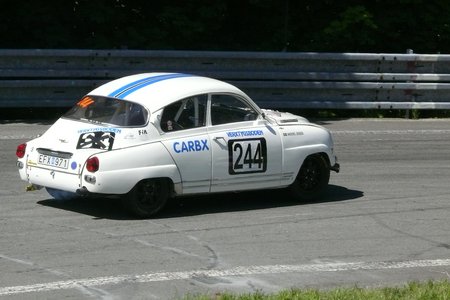







Šternberk hosted the fourth round of the FIA European Hill Climb Championship, after races in France followed by Portugal and Spanish events. The most notable change this year is that recent Ecce Homo winning ace, Christian Merli, lost his main competitor, the person of Simone Faggioli. While last year they both shared the championship title, having scored maximum points separately in their respective classes, for the 2022 season Simone decided to take part in his national Italian Hill Climb Championship and try to win it. However we heard that he should be back soon in European racing.








In absence of Faggioli, who has more overall wins of the Ecce Homo hill climb race than any other driver, the main opposition to Merli's factory Osella Sports Prototype in the Single Seater class came from local Czech drivers, young Petr Trnka in Norma M20 FC and experienced and traditionally fastest local Miloš Beneš, driving similar car like Merli, Osella FA30 single-seater sports car.
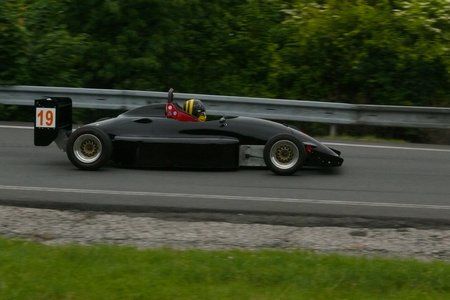







The next interesting competition was to come from a pair of new Nova NP 01 prototypes, in hands of Spanish Joseba Lanzargorta Iraola, who was 4th in qualifying and a bit slower French Sébastien Petit.


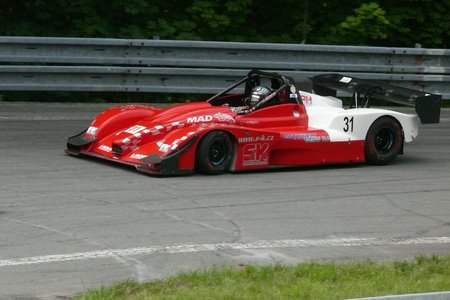



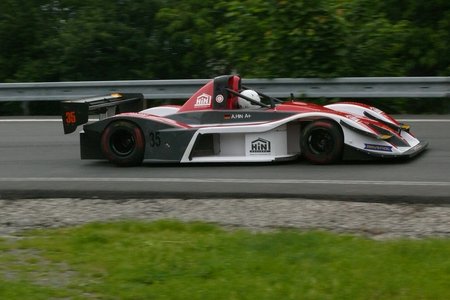

They all were supported by a number of other Osellas (FA30 or PA30) and slower Normas. Among the closed cars, the fastest VW Golf special, in hand of Karl Schagerl, was actually faster in practice than any of the open wheelers.


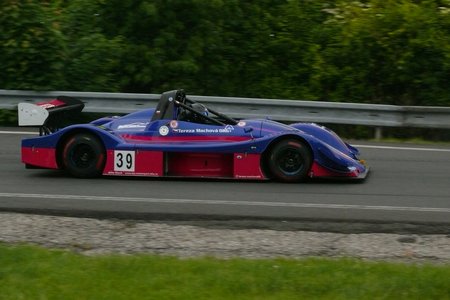





This year, for personal reasons, we could only attend the race day, on Sunday, so opted for two best places for taking photos: First heat in the Sojkova zatáčka (Sojka's Turn) while the second heat we spent at Starý start (Old Start). Of the favourite cars, there were several notable non-starters, we cannot bring you photos of: Dan Michl retired his fast Lotus Elise silhouette after the practice. And we also lost regular Felix Pailer with an old but powerful Lancia Delta Integrale, the car from the mid 80s.

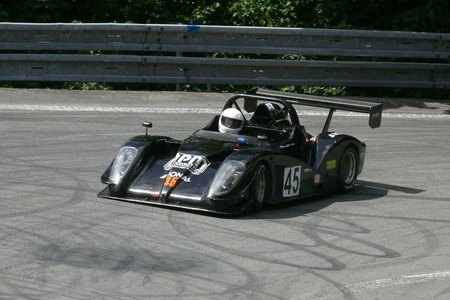






As it was our first Sunday's visit to Sojkova zatáčka, usually being there on Saturday for the beginning of the practice, we can bring some shots from the traditional ceremony, laying down the flowers to Bruno Sojka's memorial. This great Czech racer was killed here in 1951 under uncertain circumstances. Back then, Ecce Homo was the circuit race and Bruno Sojka was one of our best sports car drivers of the post-war era, being one of the Tatra factory drivers. Nobody knows what actually happened, but he left the track driving his Tatraplan sports car and died instantly of his injuries. His records can be found also in our RSC archives here: www.racingsportscars.com/driver/Bruno-Sojka-CS.html.








After this ceremony, at half past eight, the race was started, under a sunny sky, though some rain was possible in the afternoon. Fortunately the rain did not happen and the race was just delayed with a number of smaller accidents or other issues. Possibly the most notable accident, which however brought no delay, happened in the first heat, just in front of our eyes in Sojkova zatáčka. Miloš Beneš, over-motivated to beat Petr Trnka for the second position, accelerated too fast exiting the turn, touched the safety barrier and lost his rear wing. Despite he could continue at lower speed, he became a non-finisher and also skipped the second heat. Track marshals were able to clean the track from the remains of the rear wing on time, so the next and last running Christian Merli could continue around at full speed, taking the lead in the race ahead of Trnka and others.







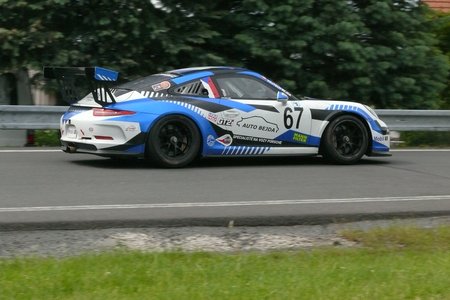
The second heat did not change anything in the top two positions. Only Christian Merli (Osella) improved his track record set last year by 8 tens of seconds. Its new value is 2:39.800. Peter Trnka in Norma was safely second overall, 10 seconds behind Merli, followed by three other Osellas. Closest of them was German Alexander Hin (PA30), a full 13 seconds behind Trnka. Robin Faustin (FA30) was fourth and Peter Vítek (PA30), second fastest Czech finisher was fifth.








Best of the Nova drivers, Sébastien Petit, was the last driver running under 3 minutes per heat. Swiss Joel Burgermeister, in Tatuus, 7th overall was best among open-wheelers, but only 3rd among single-seaters, as the FA30 Osellas are actually center-seat prototypes running in the same Category as standard Racing formula cars. Just behind him, 8th overall was that very fast VW Golf of Karl Schagerl followed by another quick touring car, Mitsubishi Lancer Evo IX driven by Liridon Kalenderi.








Former four-time overall winner, Hungarian László Szász in Reynard 01L closed the top 10, as the second fastest open-wheel driver. There were many other very interesting sports cars and GT cars, ranging from the new KTM X-Bow of Marek Rybníček (11th overall), through many other Osellas, Normas, Radical, Corvette, Lamborghinis, many Porsches, both modern and vintage, including 928 and a lone Porsche 935 of Almeras, lots of winged BMW M3s, Lancers, Metalex, including 2-03 prototype from 1978, Škodas to Jaguar XK120 - which was actually classified as the very last car in the finish, even behind Steyr-Puch and a very slow lady Anna Ambrúz in Tatuus FR.








Apart from the photos, a lot of information about the cars can be found on my brother's website: www.euromontagna.com/results.php?id_race=6631&lng=2. By the way, this website appeared on stickers of one of the Osellas (PA21 JRB), a small-engined prototype 1000 cc driven by Karel Berger, who finished in a nice 19th position overall, in his modern sports car debut in Ecce Homo.








